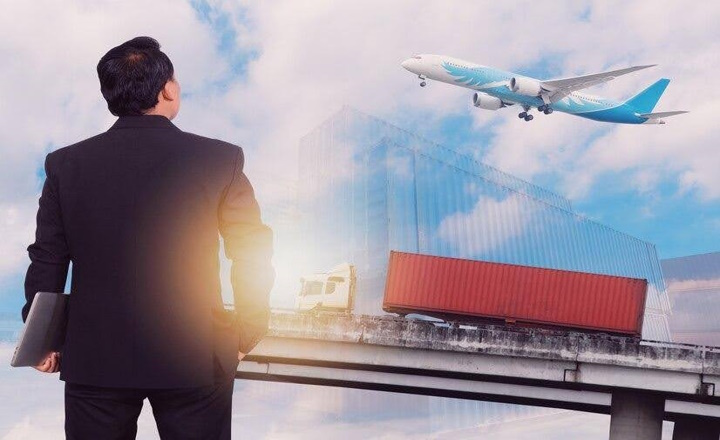
Did you know that over 90% of global trade moves by sea, yet air freight dominates in speed? With rapid advancements in maritime technology, the logistics industry is beginning to ask:
Will high-speed vessels ever challenge air freight's dominance?
This article explores the key differences between sea and air freight, the barriers to faster ships, and innovations that could reshape the future of shipping.
Ocean Freight vs Air Freight: Built for Different Goals
For centuries, freight shipping has been the backbone of global trade, moving goods across the oceans. These massive container vessels transport goods such as electronics, cars, machinery, raw materials, and even perishables. However, when it comes to speed, they fall far behind air freight.
Container ships typically operate at speeds of 20–25 knots (37–46 km/h), which makes them cost-effective but significantly slower than aircraft.
In contrast, a Boeing 747 cargo plane can cover 900 km in just one hour, making air freight the obvious choice for urgent shipments such as medical supplies, high-value electronics, and perishables.
Despite its speed advantage, air freight is not without its drawbacks. The cost of shipping by air is substantially higher, often making it an impractical choice for bulk shipments. Additionally, the environmental impact of air freight is significant, with 50 times more CO₂ emissions per tonne-kilometre compared to sea freight.
Why Are Cargo Ships Slower? The Trade-Off Between Speed & Capacity
Cargo ships are not designed for speed; instead, they prioritise maximising cargo capacity and reducing operational costs. A single container vessel can carry thousands of shipping containers, making it the most economical way to transport large volumes of goods across the globe.
One of the main challenges in making ships faster is the trade-off between speed and cargo capacity. Increasing the speed of a cargo ship requires larger engines and more fuel, but this comes at the cost of reduced cargo space and significantly higher operating expenses. If a ship were designed for high-speed travel, it would lose much of its carrying efficiency—defeating the very purpose of maritime freight.
Another major factor is fuel consumption. Unlike aircraft, ships experience exponential increases in fuel usage as speed rises. For this reason, most shipping companies have embraced “slow steaming”—reducing vessel speeds to lower emissions and fuel costs. This practice has not only cut operating expenses but has also made sea freight a more sustainable option.
Can Maritime Innovations Narrow the Speed Gap?
While air freight remains unmatched in speed, ongoing advancements in maritime technology are slowly closing the gap.
One promising development is the design of hydrodynamic hulls, which reduce drag and improve fuel efficiency. Japanese shipbuilders are currently testing "marine bullet trains", vessels designed to achieve higher speeds without excessive fuel consumption. These innovative hull designs could pave the way for a new generation of faster cargo ships.
In addition, alternative propulsion systems are being developed to replace traditional diesel engines. Liquefied natural gas (LNG) engines, hybrid propulsion, and even experimental nuclear power are being explored as potential solutions to increase speed while maintaining fuel efficiency.
Automation is also playing a crucial role in optimising maritime speed. Autonomous vessels, powered by AI and sensor-based navigation, are expected to maintain optimal speeds 24/7 without human-related inefficiencies like fatigue or navigational errors. Followmont Transport has already begun investing in fleet automation to improve efficiency in regional freight services.
Some companies are even experimenting with high-speed cargo ships that balance speed with fuel efficiency. While these vessels remain in early development, their potential impact on global logistics could be profound.
Is Speed Worth the Price? The Cost vs Speed Dilemma
Even with technological advancements, cost remains the primary factor influencing whether businesses choose air or sea freight.
Shipping goods by air can be ten times more expensive than sending them by sea. This means that, while air freight provides unmatched speed, its high cost makes it impractical for most bulk shipments. On the other hand, sea freight, despite its slower transit times, remains up to 80% cheaper, making it the preferred choice for businesses transporting large quantities of goods.
Many companies are now adopting a hybrid approach—using air freight for urgent shipments while relying on ocean freight for cost-effective bulk transportation. This strategy ensures a balance between speed, affordability, and operational efficiency.
Cargo Ships & Air Freight: Complementary, Not Competitive
Rather than viewing air and sea freight as competitors, many companies now see them as complementary solutions in the supply chain.
For example, a fashion retailer may ship bulk inventory by sea while using air freight for last-minute seasonal launches. Similarly, tech manufacturers often transport batteries via air for quick production cycles, while moving assembled units by sea to reduce costs.
Can Cargo Ship Speed Ever Compare?
While cargo ships will likely never match air freight in speed, they remain unmatched in affordability and capacity. The global shipping industry is evolving rapidly, integrating automation, AI, and alternative fuels to improve transit times. However, even with these advancements, the speed gap between cargo ships and air freight will never fully close.
That being said, technological innovations will continue to narrow the gap, making sea freight faster and more efficient without sacrificing cost-effectiveness.
Final Thoughts: The Future of Cargo Ship Speed
The real question isn’t whether cargo ships will ever match aircraft in speed, but how shipping can evolve to meet the rising demand for faster, greener, and more cost-effective transport solutions.
While air freight remains superior in speed, cargo ships will always lead in capacity and cost-effectiveness—ensuring they remain the cornerstone of global trade for decades to come.
| < Prev | Next > |
|---|





